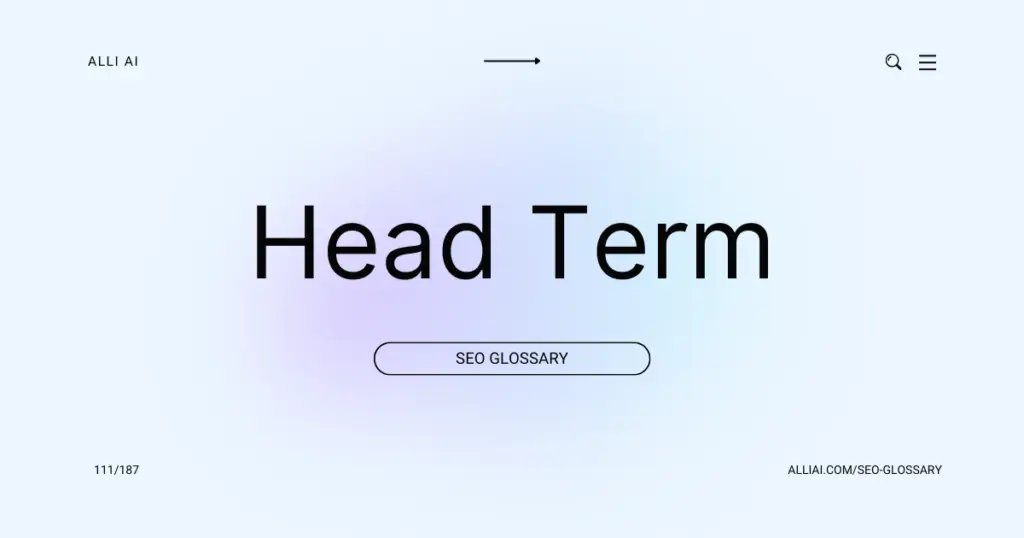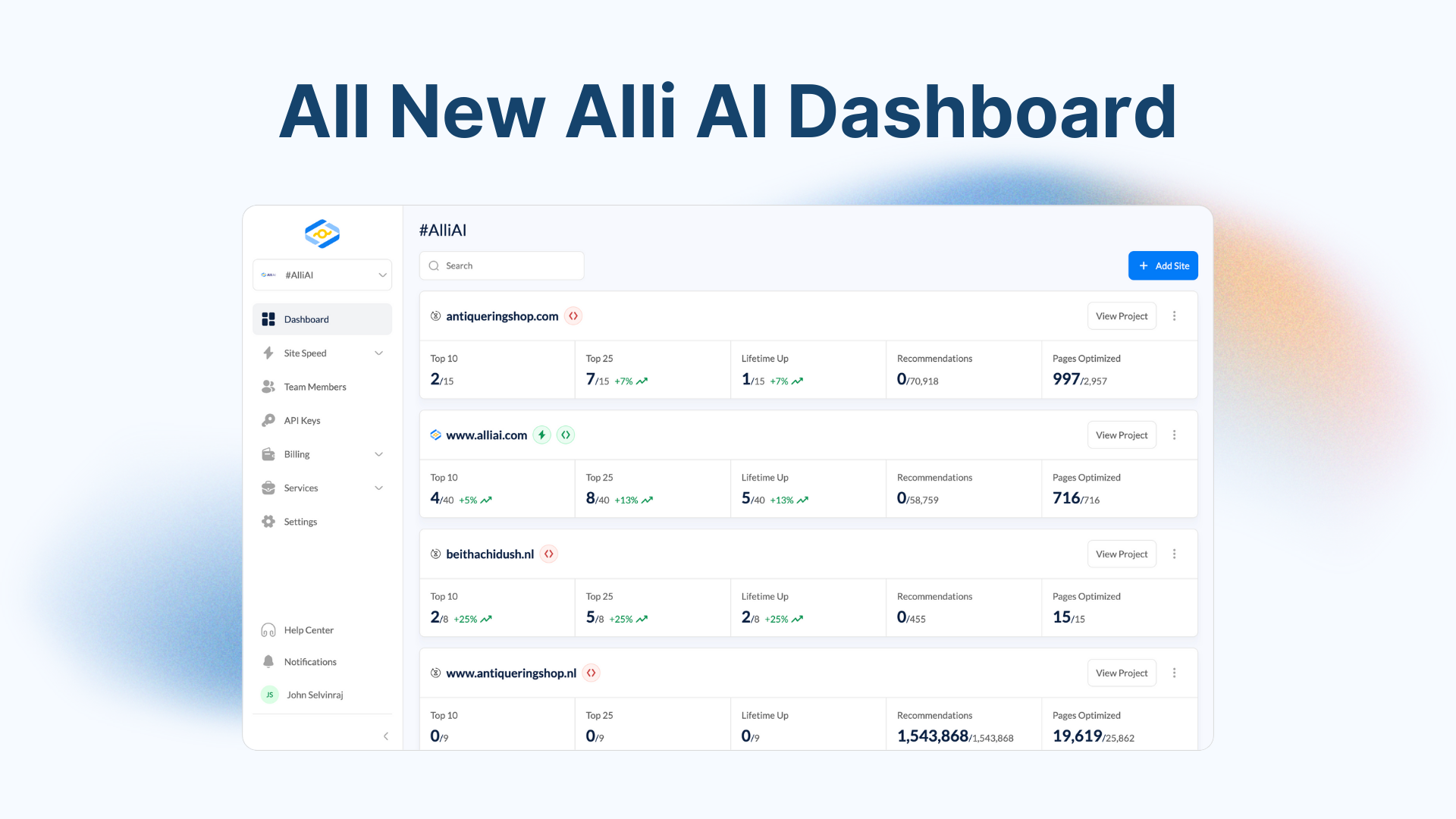What Does Head Term Mean?
A “head term” in SEO refers to a short, broad keyword phrase that typically consists of one or two words. These terms are highly competitive, have a high search volume, and generally attract a significant amount of traffic. Head terms are less specific than long-tail keywords and usually represent a generic topic or category.
Where Does Head Term Fit Into The Broader SEO Landscape?
Head terms, also known as short-tail keywords, are broad keywords typically consisting of one or two words. They have a high search volume, indicating that many people are searching for these terms on search engines. However, due to their broad nature, head terms are highly competitive when it comes to ranking in search engine results pages (SERPs).
In the broader SEO landscape, head terms are crucial for driving large volumes of traffic to a website. They serve as foundational elements in keyword strategies, often defining the core topics around which sites structure their content. SEO experts leverage head terms to improve the visibility and reach of a website, targeting general topics relevant to their primary audience.
However, due to their competitive nature, ranking for head terms alone is challenging, especially for new or smaller websites. Therefore, a balanced SEO strategy also includes long-tail keywords, which are more specific and less competitive. This combination allows for both broad audience reach through head terms and targeted, niche audience engagement through long-tail terms.
Real Life Analogies or Metaphors to Explain Head Term
1. Head Term as Main Dish: Just as a main dish is the centerpiece of a meal, attracting the most attention and defining the dining experience, a head term is the core keyword in SEO that garners significant search volume and shapes the content strategy.
2. Head Term as the Sun: Like the sun in our solar system, which all planets revolve around, a head term is the central keyword that other related keywords and content strategies revolve around in SEO.
3. Head Term as a Trunk of a Tree: The trunk of a tree supports the branches and leaves. Similarly, a head term supports a cluster of related, more specific keywords (the branches and leaves), anchoring the overall content and SEO strategy.
4. Head Term as a Highway: Just as a major highway facilitates high volumes of traffic to move quickly and efficiently, a head term handles a large volume of search traffic, directing users efficiently towards relevant content.
5. Head Term as the Headline of a Newspaper: Much like a headline captures the essence and draws attention, a head term captures the primary focus of search inquiries and draws considerable search traffic.
How the Head Term Functions or is Implemented?
1. Research: Identify the most relevant and high-volume keywords related to the core topic or business.
2. Analysis: Use SEO tools to assess the competition and potential of the head term, analyzing factors like search volume, keyword difficulty, and relevance.
3. Optimization: Incorporate the head term strategically in website elements such as titles, headings, meta tags, URLs, and content to enhance visibility and relevance.
4. Content Creation: Develop comprehensive and authoritative content that revolves around the head term, ensuring it answers the needs and queries of the target audience.
5. Link Building: Obtain backlinks from reputable sites to the content pages targeting the head term to improve domain authority and page ranking.
6. Tracking: Monitor the performance of the head term in search engine results pages (SERPs) using analytics tools, adjusting strategies as necessary based on performance data.
7. Refinement: Continuously update and refine content and SEO strategies to adapt to changes in search engine algorithms and competitor activities.
Impact Head Term has on SEO
Head terms, typically short, popular keywords with high search volumes, impact SEO performance and rankings significantly. Dominating rankings for these terms can dramatically increase a site’s visibility and attract more traffic due to their broad appeal. However, high competition for these terms makes achieving top rankings challenging without substantial SEO investment and robust domain authority. Additionally, while head terms contribute to higher impressions, they might lead to lower click-through rates and engagement since they are less specific and do not always align precisely with user intent. Focusing solely on head terms can result in a more generic user experience, potentially reducing the relevance and personalized aspect of content presented to users.
SEO Best Practices For Head Term
1. Keyword Research: Identify variations and long-tail keywords related to the head term using tools like Google Keyword Planner, Ahrefs, or SEMrush.
2. Optimize Title Tags: Include the head term at the beginning of the title tag on relevant pages. Keep the title under 60 characters.
3. Meta Descriptions: Include the head term in meta descriptions to improve click-through rates from search engine results pages (SERPs). Keep meta descriptions under 160 characters.
4. Header Tags: Use the head term in H1 tags for relevant pages. Use variations in H2 and H3 tags.
5. SEO-Friendly URLs: Include the head term in the URL of relevant pages.
6. Content Optimization: Incorporate the head term and its variations naturally in the content, particularly in the first 100 words.
7. Internal Linking: Use the head term as anchor text where relevant for internal links pointing to the optimized page.
8. Backlink Building: Obtain backlinks with the head term as anchor text from high-authority sites.
9. Image Optimization: Use the head term in the alt text and file names of images on the relevant page.
10. Schema Markup: Implement relevant schema markup (like Product, Article, etc.) to help search engines understand and index the content better.
11. Mobile Optimization: Ensure the website is mobile-friendly, as mobile-friendliness is a ranking factor.
12. Speed Optimization: Improve page loading speeds by optimizing images, minifying CSS and JavaScript, and using a content delivery network (CDN).
13. Monitor Rankings: Regularly track the SERP rankings of the head term and adjust strategies as necessary.
14. Content Updates: Regularly update the content where the head term is used to keep it fresh and relevant.
15. Competitor Analysis: Regularly check how competitors are ranking for the head term and adjust strategies to stay competitive.
Common Mistakes To Avoid
1. Targeting Only High-Volume Keywords: Focusing solely on head terms due to their high search volumes can lead to intense competition. Diversify keyword strategy by including long-tail keywords that might convert better.
2. Neglecting User Intent: Head terms are generally broad, making it difficult to ascertain user intent. This can lead to irrelevant traffic and lower conversion rates. Analyze search intent carefully through auxiliary long-tail keywords and user behavior analysis.
3. Ignoring Keyword Difficulty: Competing for head terms without considering keyword difficulty can result in wasted resources. Use SEO tools to assess the competitiveness of keywords and adjust strategies accordingly.
4. Over-Optimization: Excessive use of head terms in content can lead to keyword stuffing, making content unreadable and risking penalties from search engines. Maintain a natural flow in content while using keywords strategically.
5. Failing to Update Keywords: The popularity and relevance of keywords can change. Regularly update and revise keyword strategies to align with current trends and algorithm updates.
6. Lack of Content Depth: Head terms are often broad, potentially leading to superficial content if not handled correctly. Aim to cover topics in depth, which can also improve the visibility of associated long-tail keywords.
7. Overlooking SERP Features: Head terms often trigger SERP features like featured snippets, knowledge panels, or local packs. Optimize content to take advantage of these features where possible.
8. Forgetting About Competitor Analysis: Focusing on head terms without analyzing competitors’ strategies can prevent understanding of what works. Review competitor keyword strategies to find gaps or opportunities for differentiation.
9. Poor Alignment with Business Objectives: Using head terms without aligning them with business goals can lead to irrelevant traffic. Keywords should match the products, services, and user segments the business aims to target.






